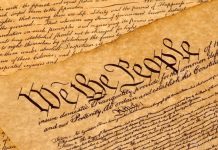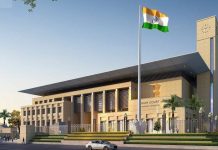This article is written by Naman Sherstra, from the Department of Law, University of Calcutta. The article depicts the arising conflicts between the executive and the judiciary and the ways to counter it.
Table of Contents
Introduction
The conflict between the executive and judiciary is a long time back existing since the Constitution came into force. The political establishment of function sharing between both wings of the Union is depicted in the Constitution of India. The thrust of power acquiring sometimes creates tensions when the executive starts assuming the power of the judiciary then the government becomes autocratic. The executive is that wing of the government which makes policies and implements it. The judiciary has been bestowed with the power to check such actions. The separation of power exists between all the wings of the Government which is exercised by the method of Check and Balance. It means that any oppressive action of the administrative action is subject to judicial review.
Recently, the government decision of making it mandatory to install “Aarogya Setu” application by the executive order shows how the executive used its powers in an arbitrary manner overlooking the data privacy concerns of the citizen. However, later due to judicial intervention the government eased off its order. The National Judicial Appointment Committee has been a great example which shows the conflict of powers between the executive and the judiciary. While deciding over the question over the appointment of the judges the SC struck down it because it was a foray into the independence of the judiciary providing primacy to the executive.
Difference between executive and judiciary
The executive is a wing of the government that is responsible for the governance of the State. It not only frames policies but also implements the laws of the parliament. The Union executive consists of the President as the ceremonial head along with the Prime Minister, and the Council of the ministers. The President is the supreme power authority of the executive who makes the appointment of many higher officials of the government. The Governor, Attorney General of India and even the Council of ministers enjoy their posts to the pleasure of the president.
The Constitution of India, under Article 75 states that there shall be a Prime Minister. The Prime Minister is the leader of the executive of a government. Appointed under the hand and seal of the President, the Prime Minister leads the union cabinet and administers the function of the executive through them. The Prime Minister has the power for the appointment and removal of the cabinet of Ministers. The President, Prime Minister and the Cabinet Ministers are the part of temporary executives who hold their respective offices till their 5-year term. The bureaucrats are the permanent form of an executive who works under the Government of India. Judiciary is the system in a state which comprises the Supreme Court, High Courts and the Subordinate Courts. The judiciary re-enforces and interprets the laws. The role of the courts is to decide the conflicts, cases based on the facts and laws.
Separation of judiciary from the executive
In a parliamentary form of government, one needs to understand the term ‘Separation of powers’ as it is the seedling of the separation of the judiciary from the executive and legislature as well. The term “separation of power” or “trias politics” was first introduced in the 18th century by Charles-Louis de Secondat, baron de La Brède et de Montesquieu. In his book “Spirit of Laws”. In his book, he discussed the jurisprudential work of the political authority of the state which includes legislature, executive and the judiciary. So, the term separation of power states the mutual relation of the judiciary and the executive and their exclusiveness in terms of power. Both wings of the Government never interfere with each other in terms of power.
However, the functions are shared by both of the domains. The drafters of the Constitution had not placed the term separation of power in the Indian Constitution as they believed that it is an inherent feature of the Constitution. Judiciary being an independent body has been bestowed with the power to restrain the arbitrary function of the executive. The independent nature of the judiciary from both wings of the government has provided it extensive powers to cross-check the action of the executive. Jurists believe that the separation of power is vested in the constitution of India as the basic structure doctrine. However, the sharing of the function has not been mentioned in the constitution as well as it does not come under the doctrine of separation of powers.
In Kartar Singh vs. State of Punjab Justice Ramaswamy said that “It is the basic postulate of the constitution that the legal sovereign power has been distributed to the legislature to make laws, executive to implement such laws and the judiciary to interpret such laws within the limits set by the Constitution”. Similarly, I.C Golak Nath vs. State of Punjab Justice Subbarao, said that “The Constitution brings into existence different constitutional entities, viz. the Union, the State and the Union Territories”. It creates three major instruments of power, viz. the Legislature, the executive and the judiciary. It demarcates their jurisdiction minutely and expects them to exercise their respective powers without overstepping their limits. They should do their function within the spheres allotted to them.
Main issues for the conflict between the executive and judiciary
The long-existing conflicting between the executive and the judiciary has been common since 1950. The first tussle between the executive and judiciary goes back to 1951 when the government brought the prevailing Zamindari System to an end through legislation passed by the parliament. The Provision was challenged in Kameshwar Singh vs. State of Bihar where Patna High Court held the Bihar Land Reforms Act unconstitutional as it violated Article 14 of the Constitution of India. Several other petitions challenged under Article 31 that provided the property right. The UPA led Nehru Government provided immunity to the act by introducing First Constitutional Amendment 1951. The amendment introduced the Ninth Schedule through Article 31B insulating the Act from any kind of judicial scrutiny.
After the 1975 emergency, the Supreme Court of India triggered judicial activism through the introduction of Public Interest Litigation. The PIL was brought by Justice P.N Bhagwati for providing Justice to the socially unprivileged class who are deprived due to the administrative action. The apex Courts and the high courts are provided to issue prerogative writs against the executive action which is antipathetic to the Citizens. The judiciary is an unselected one that has enormous power to cross-check the government action whether it is constitutional or not. Recently, Justice Deepak Gupta while speaking during his farewell said that Judges should strike down the executive action which is found unconstitutional. However, Attorney General of India K.K Venugopal put a contrary view on a similar issue. He said that Judiciary is over steeping in the domain of the executive by a frequent expansion of the fundamental rights by the Supreme Court through judicial legislation.
If we look at the history many judicial pronouncements have inserted the seedling of confrontation between the judiciary and the executive.
- In I.C Golaknath vs. State of Punjab, the conflict arose where the Court left no space for the parliament to amend any kind of fundamental rights. Later the 24th constitutional amendment was brought to nullify the amendment which was again challenged in the Kesavananda Bharati vs. State of Kerala holding the brought amendment as valid.
- Similarly, in the State of U.P vs. Raj Narain, the conflict increased when Allahabad High Court set aside Indira Gandhi’s election on finding her to indulge with the unfair practices for winning the election. Also, she was debarred from contesting elections. Mrs. Gandhi in retaliation imposed the emergency.
- In 1970, the President using power conferred to him under Article 366(22) of the Constitution passed an order abolishing the Privy Purses. In H. H. Maharajadhiraja Madhav Rao vs. Union Of India upheld the validity of the Privy Purses. Now, again the executive was blown up by the judiciary in this judgement. In retaliation, the 26th Constitutional Amendment was passed by the parliament where Indira Gandhi argued that the Privy purse was against the equality rights of the Citizens and the “Privy purse” was abolished.
- In Maneka Gandhi vs. Union of India when the arbitrary action of the executive stopped Maneka Gandhi from going foreign by seizing her passport, the court quashed such order by saying that the right to travel foreign comes under the ambit of Article 21 of the Constitution. The concept of judicial review, and judicial activism after implementation opened a larger scope for the Courts to intervene in any kind of action by the Executive. The High Courts and Supreme Courts became a watch-dog of the fundamental rights of the citizens in case it is encroached by an action of the Executive.
Appointment of judges
Appointment of judges has been a conflicting issue since a long way back. This is because the judges of the Apex courts and the High Courts are appointed by the President under Article 124 and Article 217 on the recommendation of the collegium. This vested power of the executive in terms of appointment has been a reason for clashes between the executive and the Judiciary as some of the times the Government sends the recommendation list back to the collegium for reconsideration if it finds any candidate ineligible or unsuitable.
The year 2018 witnessed one of such bitter clashes when Law minister Ravi Shankar Prasad wrote a letter to the CJI Deepak Mishra segregating the recommendation of Supreme Court recommendation of appointing two judges to the Supreme Court. The Government returned the recommendation of Collegium of elevating Uttarakhand Chief Justice K.M Joseph to the Supreme Court back for reconsideration.
Migrant labour crisis
Even, the migrant labour crisis that happened recently is also a good example of a clash between the executive and judiciary. However, at first instance, the apex court had refused to entertain the issue referring to it as a part of the administrative policy to be exercised by the executive. However, the Andhra Pradesh and Madras High Court took a serious note on the matter issuing guidelines to the Central and State government to take necessary steps for the migrant labours. Later, on facing a huge criticism the SC again revisited its view on the issue and issued necessary directions to the Government.
Different powers and functions
Hence, there is a demarcation of the function of executive and judiciary, but there are certain direct powers inherent in the executive such as judicial appointments, Presidential direct judicial power under Article 72 and the Governor under Article 161 of the Constitution of India. Sometimes the executive while exercising such powers tries to supersede the boundary lines of the judiciary which attracts bitter clashes.
Judiciary exercises its exorbitant power through the way of judicial review and Judicial activism after the concept of PIL came into existence. Such powers are exercised by the Apex and High Court while any executive action is antithetical to the fundamental rights of the citizen. Sometimes, the judiciary also starts overstepping by interfering in executive policy matters using such powers conferred under the Constitution. Henceforth, such actions attract clashes between the two wings.
Ways to settle the dispute between executive and judiciary
The long-prevailing clashes between the judiciary and the executive can be reduced by cooperation and maintaining the Lakshman-Rekha while exercising its powers. Both wings of the State should escape from extra inference and overstepping into powers of one another. There are some steps which can reduce the disputes between the judiciary and executive.
Balance of powers
The term ‘Balance of Power’ is an International Relation used for the actual state of affairs in which the power is distributed between the nations with equal proportionate. However, while using it about India refers that the power-sharing is proportionally distributed between the legislature, executive and the judiciary. Each wing has been provided with the power of doing specific functions without creating disturbances by crossing the demarcation line as provided by the constitution of India. The executive should exercise its function under the constitutional mandate as the Constitution is norm and supreme.
Separation of power
It is one of the most important features in the parliamentary democratic system. However, it is not provided under the Constitution, but judges have defined it from time to time in their judgments. The term provides that all the wings have been vested with different powers. We have seen that some of the functions are shared by the executive like the appointment of judges but there lies the vested power of the judiciary as its recommendations.
Similarly, the judiciary has the power to crosscheck the actions of the executive if found arbitrary or antithetical to the fundamental rights of the constitution. So, there is a system of Check and Balance in the parliamentary form of government. So, the judiciary should not overstep by using its power of PIL to abstain the executive from doing its job. Such action often creates disturbances and spoils the relationship of the judiciary with the executive. Once, Justice Markandey Katju while deciding on a matter in Supreme Court said the judges to adhere with self-restraint as excessive interference of the judiciary is improper. He further added that unless the action is violative of some statute or shockingly arbitrary, the decisions of the administration should not be embarrassed by the excessive interference of the Judiciary. Hence, both wings of the State should prevent from interfering in each domain and work under the constitutional scheme of separation of power.
Functional autonomy
It is one of the most significant points that need to be addressed for reducing the conflicts between the judiciary and the executive. Each domain of the State should maintain its functional autonomy and respect the other two domains. The upholding of functional autonomy of both domains shall prevent the existing conflicts between the judiciary and the executive.
Mutual cooperation in work
The judiciary and the executive must work together with cooperation for the achievement of the constitutional goal for the Constitutional Scheme. The greed of power acquiring may hamper the functioning of the state and cause an internal disturbance. The domains need to work together for the establishment of a welfare and developed state where the citizens can reside happily. Adherence of such steps may reduce the existing long clashes between the Judiciary and the executive.
Conclusion
The judiciary and the executive are the two domains of the state which have their conflicts for a long time. These domains need to work on a compromise basis to uphold the constitutional scheme (Separation of powers). The excessive interference of the Judiciary will create trouble for the executive to govern the state. Similarly, the executive should not undermine the power of the judiciary and act on the most prudent basis while performing functions like Judicial appointments. Judiciary being an independent body places its priority while exercising functions of appointment. That’s Why the collegium system was preferred over the NJAC because it superseded the power of the executive over the Judiciary. Cooperation with harmony will surely strengthen the relationship between the executive and the judiciary.
Reference
- Article in scroll.in: https://scroll.in/article/961396/judges-sould-strike-down-executive-actions-that-are-unconstitutional-says-justice-deepak-gupta
LawSikho has created a telegram group for exchanging legal knowledge, referrals and various opportunities. You can click on this link and join:
 Serato DJ Crack 2025Serato DJ PRO Crack
Serato DJ Crack 2025Serato DJ PRO Crack











 Allow notifications
Allow notifications



